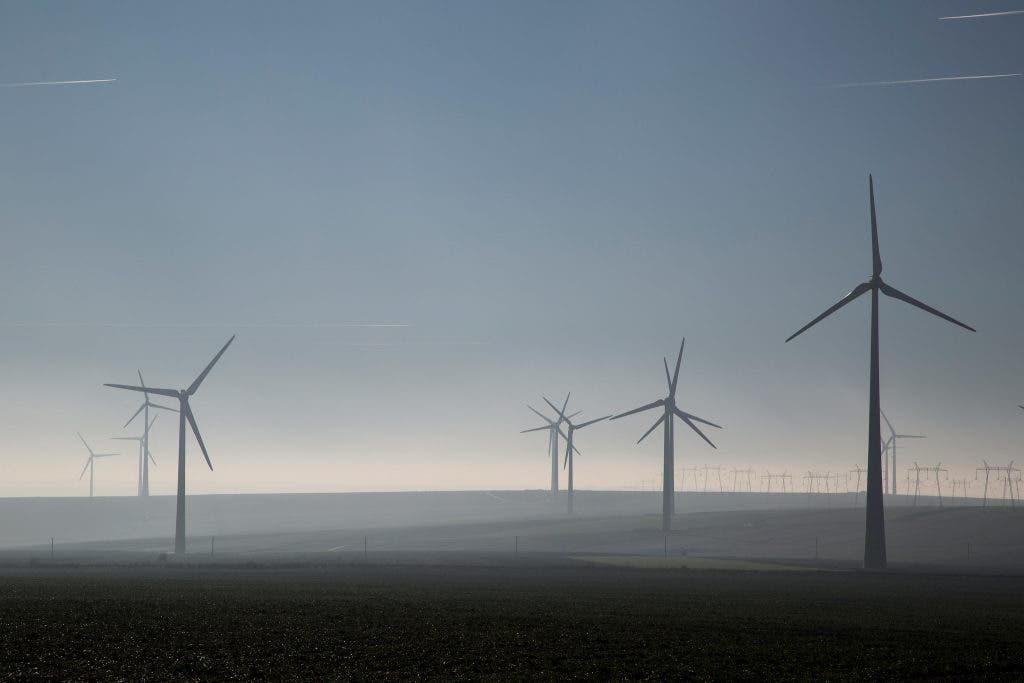The European Union announced a set of climate change proposals in which every industry will be forced to accelerate its shift away from fossil fuels in order to cut emissions by at least 55% by 2030 (from 1990 levels).

No more diesel cars by 2035
The legislation, presented by the EU’s executive branch (the European Commission) includes a dozen major proposals, ranging from new levies on greenhouse gases to a phase-out of gasoline and diesel cars by 2035. They also involve a revamp of the bloc’s emission trading program, through which companies for the CO2 they emit.
“By acting now we can do things another way… and choose a better, healthier and more prosperous way for the future,” European Commission President Ursula von der Leyen said at a press conference. “It is our generational task [to secure] the wellbeing of not only our generation, but of our children and grandchildren. Europe is ready to lead the way.”
The aim of the legislation is for the bloc to move away from fossil fuels and take better care of the environment by policy design, rather than being forced into urgent measures at some point in the future. European Executive Vice-President Rans Timmermans said failing to act now would mean “failing our children and grandchildren.”
Considering their implications, the proposals will likely be subject to intense lobbying from both environmental and industry groups as they move through the legislative process over the next year. They will also face resistance because of the very different energy mixes in member countries, from France that heavily relies on nuclear to Poland on coal.
In Hungary, Prime Minister Viktor Orban’s government already questioned the plan, saying it threatened to undo its utility price cuts. The EU package includes a regulation that toughens energy taxation rules to discourage fossil fuels and promotes cleaner energy sources. “The choice of tools is untenable and unacceptable,” Cabinet Minister Gergely Gulyas told reporters.
But the EU has drawn its line in the sand: emissions must go down, and quick.
The sticky points
One of the most controversial elements of the climate plan is a “carbon border adjustment mechanism,” which would impose duties on foreign companies – increasing the price of certain goods such as steel, aluminum, concrete, and fertilizer. The aim is to ease pressure on EU producers that cut emissions but struggle to compete with importers.
Such a move could be seen as protectionist amid the World Trade Organization rules and could be difficult to justify for the EU, which is known for its strict defense of open trade. Corporate lobby BusinessEurope already denounced the plan, saying it “risks destabilizing the investment outlook” for sectors such as steel, cement, aluminum, fertilizers and electric power “enormously”.
The plan also involves a revamp of the bloc’s emissions trading program, under which companies pay for carbon dioxide they emit, and introduce taxes on shipping and aviation fuels for the first time. The bloc will create a $85 billion fund to compensate those who lose out, with the money coming from the expanded market for carbon emissions.
Yet, for all the organizations who say the plan is too far-fetched, many claim the proposals don’t go far enough. Climate campaigner Greta Thunberg said that unless the EU “tears up” its proposals, “the world will not stand a chance of staying below 1.5ºC of global heating”. Meanwhile, Greenpeace EU Director Jorgo Riss said celebrating the plan would be like “a high-jumper claiming a medal for running under the bar.”
The EU Commission set out in September its plan to reach a 55% emissions reduction by 2030, saying at least 30% of the EU’s long-term budget would be spent on climate-related measures. The targets are part of a global effort to tackle climate change by cutting atmospheric pollution, especially carbon dioxide (CO2) emissions.
In 2015, countries agreed under the Paris Agreement on climate change to limit temperature increase to 2ºC, aiming at 1.5ºC. Nevertheless, global temperatures have already increase by 1ºC and could reach 3ºC with the current trajectory. More ambitious climate action is urgently needed to avoid the worst effects of the climate crisis.






